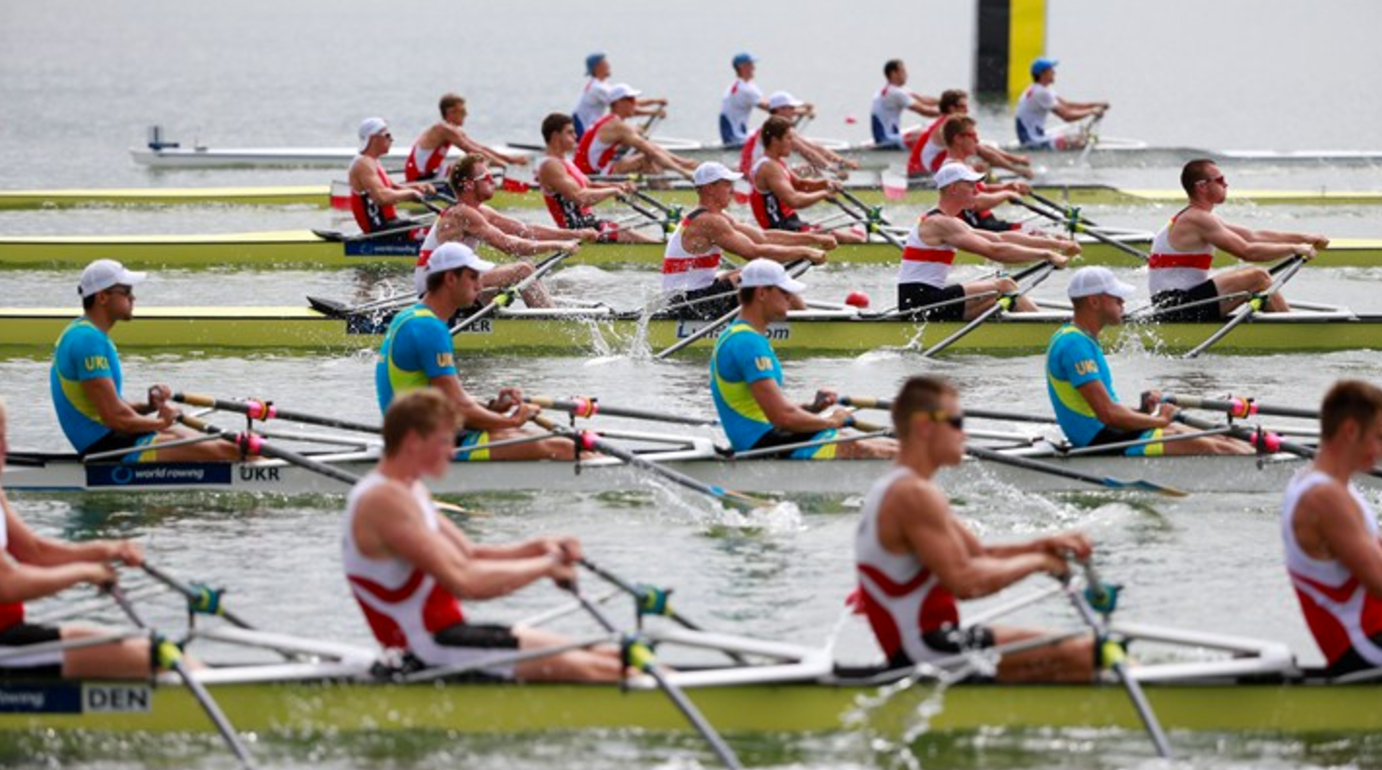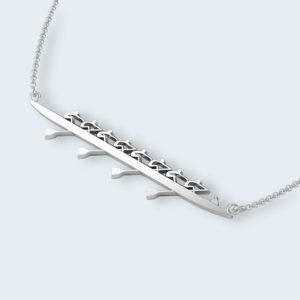Here is a question from our audience. It arrived a while ago. We have asked our experts to answer…
World Rowing Masters regatta is coming up, and I guess most of what can be done of preparation is done by now. However I cannot help but thinking about the start, and how to improve it. If not for anything else, so for next year’s regatta season.
I stroke a Masters G and H 8+. I am interested to find out what has been said or written about preparing and improving the start.
We got answers from 3 experienced people for you.
Rebecca Caroe’s answer


- Use a speed measurement tool like Coxmate GPS and do different start sequences. Check out our shop
- Measure and record each start sequence you try out. Download and review on land. Which went faster or further?
- Secondly ask the crew to tell the cox what s/he says that helps them the most.
- Ask the cox to keep reading out boat speeds so you learn when the boat is going at your optimal speed. Especially after the start as you transition onto race pace.
- Also read our blog next week: what to say during a long distance race.
Masters Race Regatta Start: Sander Roosedaal
The best start practice I am aware of is one that I learned a few years ago from a great cox. I now do it with all crews I row with, with good results. It starts on the dock, where the cox or the stroke seat (for boats without a cox) announces that we are going to do a start practice and makes sure everyone understands the following:
- sit in start position relaxed, breathing, blade fully covered with upper blade edge at the water level
- only bow and 2 seat make adjustments to align the boat. Cox gives the calls. For sculling, only bow seat makes alignment corrections.
- eyes inside the boat. Full concentration. Breathe.
- cox is making the following calls: (insert your calls). Cox, do not deviate from these. Do not improvise.
- stroke lengths are as follows (insert the start sequence that you want to row)
- first stroke. Don’t overdo it on power. Most important is to all start at the same time and set up the boat as a stable platform for stroke 2
- stroke 2 is usually shorter than stroke 1.
- during the start, all eyes are in the boat and keep breathing.
- The practice itself is simple and very effective. Find a quiet place on your lake or river. Prepare for the start. Row only the first stroke, followed by hands away and balance the boat [when you easy].
- Keep repeating that first stroke until you are absolutely satisfied with the quality. This can take 5, 6, 10 or more repeats. Cox calls out what he likes and what he didn’t like. In boats without a cox, this is the role of stroke seat.
- When you are satisfied with stroke one, add stroke two. Repeat until absolutely satisfied.
- Add stroke three, etc. I guess the best is to keep adding strokes until you are at stroke 120 but I usually end this drill with a full start, then do a few “start plus 5” and that’s is it.
- The drill takes time but is very focused and fun!
- Masters crews tend to be a little too ‘democratic’. Its is absolutely crucial to establish the authorities in the starting practice. Only the Cox (or stroke in coxless boats) decides what the standard is for a good stroke and when the crew is ready to add another one. He may take inputs from stroke seat, but keep that opinionated guy in seat 7 checked!
- I am curious to hear what others have to say about practicing starts. But this one really works for me. I race in a country where a lot of the starts are in windy conditions and most races are without a starting pontoon. So sometimes the starter will do a very fast start whenever the boats are aligned, so it is absolutely key that the entire crew is fully focused and ready.
Marlene Royle’s article – Skills to Sharpen Your Starts
This is an extract from Faster Masters Episode 6. 

Develop the skills that create stability, strength, and smooth coordinated movements on your racing starts
To improve your starts for 1000-meter events you have to develop skills that create stability, strength, and smooth coordinated movements. The basic purpose of a racing start is to get the boat moving from a still position up to race pace in the most efficient way. A well-executed racing start is calm, composed, the bladework is clean, and the hull tracks straight. A series of approximately five part-slide strokes eases the boat away from the stake boats and minimizes kicking the boat sternward with the initial force application of the legs. By the sixth stroke, full slide is achieved followed by a series of ten to 20 strokes at a rate that is higher than the base rate for the middle of the race. For example, ten strokes at 38 strokes per minute, then ten strokes at 36 strokes per minute, then a base rating of 34 is reached for the body of the race. The goal of the higher tempo strokes is to get to full speed and to find your rhythm for the duration of the race. A good start gives you the advantage of getting out in front and being able to see your competitors. Few races are won in the first 50 meters but a poor start can cause you to tense up, go off course, or lose critical seconds that can be difficult to make up especially in a 1000-meter race. There is no cookbook recipe for the perfect start. Experiment and try different combinations. Much depends on what you or your crew feels is most effective. Some rowers use very structured sequences such as three-quarter, half, three-quarter, full slide, full slide others start sitting at half-slide and just build the slide length to full over the course of five strokes without a strict pattern allowing more room for adjustments to water or wind conditions.
Once you back your boat into the blocks you might have to sit in your start position for a few minutes while the boats are being aligned before you actually take off. This is when you need to maintain your stability. Focus on keeping your core muscles firm, riggers even and level by maintaining equal pressure into the pin in the direction of the blade. Subtle changes of pressure of the collar against the pin can tilt your boat, if there is unequal pressure the rigger with less pressure will rise up. If there is not enough pressure on the port side the boat will tip to starboard. Applying slight pressure to port to “bring the rigger down” and the boat will level. This can be particularly helpful if there is a crosswind and you feel it is pushing you over to one side. Practice by sitting at half-slide position, blades squared, and visualize that you have a carpenter’s level across the gunnels of your boat; keep the bubble centered and hold still, then progress to three-quarter and seven-eighths slide. Get comfortable staying set in this position.
On your initial stroke, you want to make sure that your collars are snug against the pin and your blades are firmly set in the water at the proper blade depth. Avoid digging deep or washing out which can cause you to go off course at the drop of the flag. A valuable drill for developing the feeling of the blades loaded and for mastering that first stroke is the Joy of Backing. Sit at the finish with your legs flat and blades squared. Back by pushing your hands away and let them draw you up the slide with relaxed legs and soft hands. As you approach the front end, feel the water pull the blades toward the bow and the handles into your finger tips, then press your legs as for the first quarter of the drive. Keep your hands light. The blades stay squared in the water the entire time, but the water pressure changes from the back of the blade to filling the spoon as you essentially stay in place. Start with half distance, finish position to half slide, then progress to three-quarter slide and to full. Repeat the movement several times. Attend to the feeling of the water drawing on your blades and the stable, secure feel of the blades locked into the water. This gives the idea of how the drive develops without ripping and by working with the water with soft hands and relaxed legs. Tense hands or legs will give you a very unstable feeling and you could roll your boat. Again, for greater stability and security, apply pressure against the pins toward the blades.
To add strength to your first 100 meters power up with a bungee cord or rope around your boat for added resistance. Wrap a rope or clip a bungee cord with some extra rope attached to one end around the boat to the stern of your footstretcher. Make it easy to unhook one side while in the boat so you can take it off easily. Row your race warm up without the bungee cord; after your warm up put the bungee on. Row ten 30-second pieces from a standing start with 90-seconds rest between. Do each start with explosive power at the maximum rating that you can row effectively. Another session is two 10-minute pieces alternating 20-seconds at maximum power and rating with 40-seconds easy then rest for five minutes between pieces.
Develop smooth coordinated movements at higher speeds. Train your bladework and fine motor handling reactions to be sharp. During your steady rows add in 20-stroke accelerations at one-quarter slide and then half-slide every five minutes. Take some risks on these short pieces aiming for stroke rates over 50 strokes per minute during half-slide, over 60 strokes per minute during one-quarter slide. Keep the handle moving without stress and maintain precise blade depth; envisage half blade. For fun try some moving starts during your steady rows when the boat is already moving and you blast off into your start sequence.








This Post Has 2 Comments
Make it a point to practice starts at the beginning of every practice piece throughout the season. Then you will be sure to have included every possible weather condition.
Great idea. We also row off in the start slide sequence every time – even if it’s light pressure to practice that part intensively.